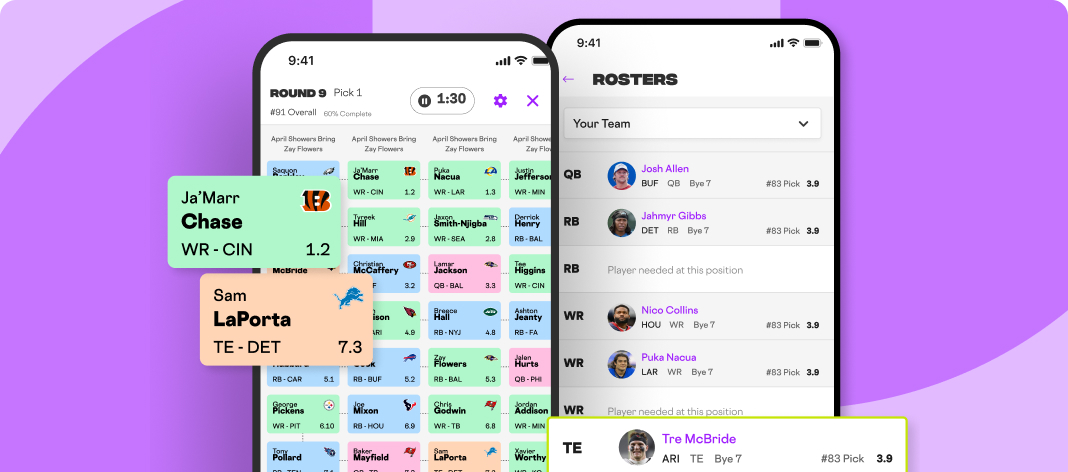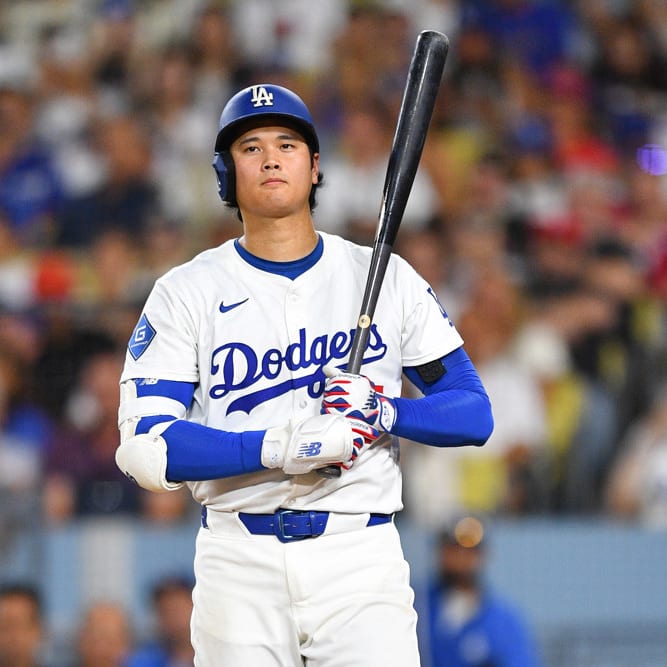As most of you are aware, I generate the site pitching rankings. I believe these should be done objectively, projecting performance then quantifying how that affects a typical fantasy squad. Over the course of the season, both of those elements have come under contention.
My confidence that hurlers like Joe Musgrove, Rick Porcello and John Lackey would improve drew some heat. Perhaps I took too long recognizing their decline in skills. However, the same system has done well with Zack Godley, Mike Foltynewicz and Michael Wacha. Ups and downs are par for the course. Disagreements with rankings based on expected performance are easily discussed because both sides can support their opinion.
The second aspect of the rankings, how the expectations influence category placement, is harder to discuss because there isn't an accepted baseline from which to base decisions. Further, not only are the dynamics of each league format different, the categorical distribution of two leagues with identical formats can be different. There isn't a one-size-fits-all algorithm to rank pitchers, even if the projection were handed to use by a genie and were guaranteed to be correct.
Still, it would be helpful to have a general baseline from which to make pitching decisions. Specifically, when is it better to deploy a two-start pitcher and when to use a slightly better single-start option? Taking that a step further, just how much worse can a two-start pitcher be and still net more points in strikeouts and wins than are lost
As most of you are aware, I generate the site pitching rankings. I believe these should be done objectively, projecting performance then quantifying how that affects a typical fantasy squad. Over the course of the season, both of those elements have come under contention.
My confidence that hurlers like Joe Musgrove, Rick Porcello and John Lackey would improve drew some heat. Perhaps I took too long recognizing their decline in skills. However, the same system has done well with Zack Godley, Mike Foltynewicz and Michael Wacha. Ups and downs are par for the course. Disagreements with rankings based on expected performance are easily discussed because both sides can support their opinion.
The second aspect of the rankings, how the expectations influence category placement, is harder to discuss because there isn't an accepted baseline from which to base decisions. Further, not only are the dynamics of each league format different, the categorical distribution of two leagues with identical formats can be different. There isn't a one-size-fits-all algorithm to rank pitchers, even if the projection were handed to use by a genie and were guaranteed to be correct.
Still, it would be helpful to have a general baseline from which to make pitching decisions. Specifically, when is it better to deploy a two-start pitcher and when to use a slightly better single-start option? Taking that a step further, just how much worse can a two-start pitcher be and still net more points in strikeouts and wins than are lost in ratios?
Here's how we'll examine this conundrum. I took the current standings from several 15-team National Fantasy Baseball Championship (NFBC) league and prorated them into season-ending average standings. The study entails looking at the standings resulting from using an average single-start pitcher versus different degrees of lesser-skilled two-start options. Ostensibly, the question is at what point does the damage to ratios outweigh the gains in strikeouts and wins?
The average NFBC team will accrue 1410 innings, so that was used in the calculations. The ERA and WHIP of the eighth-place team in those categories is 4.113 and 1.295, respectively. This will represent our single-start pitcher. It's assumed the pitcher tosses 5.2 innings per start. The corresponding number of strikeouts recorded is 5.31.
The calculation entails backing out the stats and innings provided by the single-start pitcher, adding in those from the two-start option then regenerating the standings and seeing how many points are gained or lost.
For reference, here's the unadjusted rest-of-season standings:
| PTS | ERA | WHIP | W | K |
| 15 | 3.45 | 1.18 | 111 | 1575 |
| 14 | 3.69 | 1.20 | 106 | 1501 |
| 13 | 3.85 | 1.23 | 102 | 1471 |
| 12 | 3.89 | 1.24 | 98 | 1422 |
| 11 | 4.01 | 1.24 | 94 | 1409 |
| 10 | 4.05 | 1.27 | 94 | 1402 |
| 9 | 4.07 | 1.28 | 92 | 1375 |
| 8 | 4.11 | 1.30 | 89 | 1322 |
| 7 | 4.18 | 1.31 | 89 | 1306 |
| 6 | 4.29 | 1.32 | 86 | 1291 |
| 5 | 4.39 | 1.34 | 83 | 1275 |
| 4 | 4.44 | 1.35 | 82 | 1268 |
| 3 | 4.48 | 1.36 | 76 | 1245 |
| 2 | 4.54 | 1.38 | 75 | 1152 |
| 1 | 4.69 | 1.39 | 72 | 1085 |
As a starting point, I was curious to see what ensued if the two-start pitchers replicated the exact numbers of the average pitcher, obviously in twice as many innings. To be practical, I did the substitution 26 times, representing one decision per week. The determination was done for each standings place, for as you can see above, distribution is not linear. Stats tend to be bunched in the middle with wider gaps at either end.
Here's how many points are gained and lost replacing an average single start pitcher with one with a pair of games each week. For reasons to be explained in a bit, wins are excluded.
| PTS | ERA | WHIP | K | TOTAL |
| 15 | 0 | 0 | 0 | 0 |
| 14 | 0 | 0 | 1 | 1 |
| 13 | 0 | -1 | 2 | 1 |
| 12 | 0 | -1 | 2 | 1 |
| 11 | 0 | 0 | 3 | 3 |
| 10 | 0 | 0 | 4 | 4 |
| 9 | 0 | 0 | 5 | 5 |
| 8 | 0 | 0 | 4 | 4 |
| 7 | 0 | 0 | 5 | 5 |
| 6 | 0 | 0 | 6 | 6 |
| 5 | 0 | 0 | 6 | 6 |
| 4 | 0 | 0 | 6 | 6 |
| 3 | 0 | 0 | 6 | 6 |
| 2 | 0 | 0 | 3 | 3 |
| 1 | 0 | 0 | 1 | 1 |
When looking at the results, keep in mind your team isn't going to be in the same place in each category. Chances are ERA and WHIP will be close, usually within three standings places. However, strikeouts could be significantly higher or lower.
There's nothing earth-shattering here. You'd expect ratios to be similar, except where they were extremely bunched. Teams up top have fewer standings place to gain with more strikeouts since they'll eventually add more than the top team in the category.
Let's think about wins. I suppose I could conjure up a projection based on ERA, but figured it would be better to look at these three categories, then consider wins separately since they're so contextual. Personally, I'd rather have a feel for how many points I'm likely to lose, then decide if the potential points in wins is worth the risk. To that end, note how tightly bunched the wins category sits, at least in the average standings. Ultimately, it will depend on where you're situated in your league. That said, say the average pitcher wins eight of his 26 starts. That means the two-start guy would win eight more games, which can equate to three or four more points.
For kicks, here's the results making this decision twice a week:
| PTS | ERA | WHIP | K | TOTAL |
| 15 | 0 | -1 | 0 | -1 |
| 14 | 0 | 0 | 1 | 1 |
| 13 | -1 | -1 | 2 | 0 |
| 12 | 0 | -1 | 3 | 2 |
| 11 | 0 | 0 | 4 | 4 |
| 10 | 0 | 0 | 5 | 5 |
| 9 | 0 | 0 | 6 | 6 |
| 8 | 0 | 0 | 7 | 7 |
| 7 | 0 | 0 | 8 | 8 |
| 6 | 0 | 0 | 8 | 8 |
| 5 | 0 | 0 | 9 | 9 |
| 4 | 0 | 0 | 10 | 10 |
| 3 | 0 | 0 | 11 | 11 |
| 2 | 0 | 0 | 10 | 10 |
| 1 | 0 | 0 | 7 | 7 |
Again, this makes sense. If a team happened to be leading in all three categories, they have no points to gain by adding whiffs and at some point, the added innings of average ratios will drag their stellar marks down.
Now we know to use the two-start guy if he's equal to the single-start option, unless you're running the table in pitching. What about a double-dipper projected for 11 innings with a 4.337 ERA, 1.332 WHIP and 10 whiffs? Here's the results for 26 weeks:
| PTS | ERA | WHIP | K | TOTAL |
| 15 | 0 | -1 | 0 | -1 |
| 14 | 0 | 0 | 1 | 1 |
| 13 | -1 | -2 | 2 | -1 |
| 12 | 0 | -1 | 2 | 1 |
| 11 | -1 | 0 | 3 | 2 |
| 10 | -1 | 0 | 4 | 3 |
| 9 | 0 | 0 | 4 | 4 |
| 8 | 0 | 0 | 4 | 4 |
| 7 | 0 | 0 | 5 | 5 |
| 6 | 0 | 0 | 5 | 5 |
| 5 | 0 | 0 | 4 | 4 |
| 4 | 0 | 0 | 5 | 5 |
| 3 | 0 | 0 | 5 | 5 |
| 2 | 0 | 0 | 2 | 2 |
| 1 | 0 | 0 | 1 | 1 |
On paper, the wins potential drops for the weaker pitcher but the ability to earn another point or two is certainly plausible. Something else to keep in mind is you're making this decision 26 times. Sometimes the pitcher will do better, sometimes poorer. We're assuming the cumulative outcomes are a little worse than using an average pitcher 26 times.
Here's the data for twice-a week deployment with this pitcher:
| PTS | ERA | WHIP | K | TOTAL |
| 15 | 0 | -1 | 0 | -1 |
| 14 | 0 | 0 | 1 | 1 |
| 13 | -1 | -2 | 2 | -1 |
| 12 | 0 | -1 | 3 | 2 |
| 11 | -2 | 0 | 4 | 2 |
| 10 | -2 | -1 | 5 | 2 |
| 9 | -1 | -1 | 6 | 4 |
| 8 | -1 | 0 | 6 | 5 |
| 7 | 0 | -1 | 7 | 6 |
| 6 | 0 | 0 | 8 | 8 |
| 5 | 0 | 0 | 9 | 9 |
| 4 | 0 | 0 | 10 | 10 |
| 3 | 0 | 0 | 10 | 10 |
| 2 | 0 | 0 | 7 | 7 |
| 1 | 0 | 0 | 7 | 7 |
It's still only risky for the top teams and if they happen to be lower in strikeouts and/or wins, it isn't a risk at all as those extra points easily counter the point lost in ratios.
Let's do one more, this time making the two-start pitcher register a 4.616 ERA and 1.381 WHIP. Honestly, you must be making some poor choices to stream 26 times and end up with these as the aggregate numbers.
| PTS | ERA | WHIP | K | TOTAL |
| 15 | 0 | -1 | 0 | -1 |
| 14 | 0 | 0 | 1 | 1 |
| 13 | -1 | -2 | 1 | -2 |
| 12 | 0 | -1 | 2 | 1 |
| 11 | -2 | 0 | 2 | 0 |
| 10 | -2 | -1 | 3 | 0 |
| 9 | -1 | -1 | 3 | 1 |
| 8 | -1 | -1 | 3 | 1 |
| 7 | 0 | -1 | 2 | 1 |
| 6 | 0 | 0 | 3 | 3 |
| 5 | -1 | -1 | 3 | 1 |
| 4 | -1 | -1 | 4 | 2 |
| 3 | 0 | 0 | 5 | 5 |
| 2 | 0 | 0 | 0 | 0 |
| 1 | 0 | 0 | 1 | 1 |
It gets a little riskier for the top teams, but we're still only talking about a point or two in jeopardy, which may be gained in wins. Of course, we're also at the point the weaker pitchers may garner fewer wins than the average pitcher, even with twice as many starts.
The last table will be this bad pitcher working twice a week:
| PTS | ERA | WHIP | K | TOTAL |
| 15 | -1 | -2 | 0 | -3 |
| 14 | -2 | -3 | 1 | -4 |
| 13 | -3 | -2 | 2 | -3 |
| 12 | -3 | -2 | 3 | -2 |
| 11 | -4 | -1 | 4 | -1 |
| 10 | -3 | -2 | 5 | 0 |
| 9 | -2 | -2 | 5 | 1 |
| 8 | -1 | -2 | 5 | 2 |
| 7 | -1 | -1 | 6 | 4 |
| 6 | -1 | -1 | 6 | 4 |
| 5 | -2 | -2 | 7 | 3 |
| 4 | -2 | -1 | 8 | 5 |
| 3 | -1 | 0 | 9 | 8 |
| 2 | 0 | -1 | 6 | 5 |
| 1 | 0 | 0 | 2 | 2 |
Now we're starting to see some worse results. If you're doing well in ratios, you can buffer one bad choice a week; two could cost you the championship.
To reiterate, context is everything. This is a 15-team, mixed league with average standings which by nature force the categorical distribution to be a bell curve bunched in the middle. Your league(s) have their own pattern. Where you are within that dictates how risky or conservative you need to be.
The take-home lesson is you can buffer a ton of poor decisions and not hurt your squad. The benefit of a two-start pitcher in terms of whiffs and wins outweighs the potential damage to ratios. Hopefully, this demonstrates why there are lesser two-start pitchers ranked higher than a better single start option. I'm not ranking the pitcher, but rather the affect their projected performance has on the year-end standings.
Not discussed so far is what if you're adept at streaming, ending up with aggregate two-start numbers superior to those of the one-start options? There's a word for that...
CHAMPIONSHIP!



































